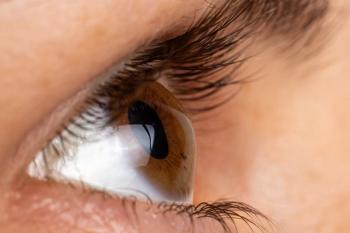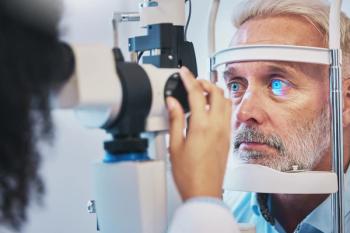
Use contact lens manufacturer rebates to your benefit
Use contact lens manufacturer rebates for daily disposable lenses to your advantage to promote better patient lens wear compliance and in-office contact lens purchase rates. Patients wearing daily disposables return more quickly for eye exams and are more compliant with lens wearing instructions.
Revenue lost from patients not purchasing contact lenses at your practice also relates to revenue lost from missed annual exams. In a study of 151 college students,1 23 percent reported having ordered contact lenses online rather than purchasing from their eyecare provider. Of those surveyed who exclusively bought contact lenses online, 24 percent admitted to not getting regular annual eye exams (the survey was conducted in a state with contact lens prescriptions limited to one year), and the same number of people acknowledged ordering contact lenses online with an expired prescription.
Using manufacturer rebates to promote in-office purchases not only helps your patient’s bottom line, but also most importantly their long-term eye health.
Related:
Encourage compliance
I conducted a review of major contact lens manufacturer rebates, and I found patient savings as high as $130 for an annual supply of contact lenses. Offsetting sticker shock of a contact lens supply order by informing patients of rebate offers can encourage patients to not only support your business but also encourages lens wear compliance.
A 2013 study by Dumbleton et al showed that patients who purchased their contact lenses from their eyecare provider returned for their annual eye examinations sooner than those who didn’t by almost 2 months (466 vs. 522 days).2 Unsurprisingly, those who didn’t buy contact lenses from their eyecare provider not only took longer to return for their annual appointments but also were less compliant following the manufacturer’s recommended replacement frequency.
More contact lenses:
Some 75 percent of subjects reported wearing contact lenses every day, but only 43 percent purchased the suggested annual supply. That’s a lot of patients not wearing their lenses appropriately and also not getting the proper follow-up care. These buying habits put patients’ eyecare health at risk, but if we can make the contact lens examination a seamless transition from exam chair to order at the same visit, it truly is in the best interest of the patient.
Today’s contact lens rebates
If you haven’t looked at how rebates work recently, here’s a quick rundown. Rebate tear sheets overview the discount based on boxes bought as well as a time-sensitive offer code. Patients typically need to register the code on the manufacturer’s website with their information and mail the manufacturer the original eye exam receipt, the original contact lens purchase receipt, and the original UPC codes from the contact lens boxes once they’ve received them. Patients usually receive the rebate in the form of a prepaid Visa gift card within 60 days of receipt of materials. You could even go as far as to help patients register their rebate offer codes online in-office by having the rebate websites bookmarked at your office desktops or linked on your webpage. Patients can also log in to the manufacturer website to monitor the progress of their rebate.
More contact lenses:
I look forward to the day when there’s a phone “app for that:” if patients could take photos of their receipts and box’s UPC codes rather than mailing the information, the process would be a little less tedious and more rewarding for everyone involved.
Make rebates work for you
In an age of competing with online retailers, rebates can make your practice shine by highlighting your personalized customer service. I’ve worked at a private practice that addressed, stamped, and included in the envelope a copy of the contact lens purchase receipt for patients as a custom amenity they hadn’t experienced at any other office. Free shipping regardless of order amount should always be offered as well-it saves you labor cost, staff time, and gives an extra convenience to patients. You could also offer free lens replacements, within reason of course, for any ripped or defective lenses. We’ve all had it happen before with our own lenses, and there’s nothing worse than finishing off a year supply with an odd lens out.
At checkout, staff should always specifically lead with annual supply information to support the doctor’s recommendation and will be backed up with the best rebates, which usually are for annual supplies. I recommend having staff explain how unilateral pricing policies (UPP) work or offer to price match competitors if patients are wary to order at checkout, which gives the patient little reason to spend their dollars for contact lenses outside your practice. Do the math for the patient and make it as easy as possible for her to say yes. And speaking of competition, private practice ODs have a unique advantage: most rebates can’t be used at big box stores. You save your patients an extra trip with incentivizing in-practice purchases.
Typically the highest manufacturer rebates are for daily disposable lenses, helping offset their higher cost from longer wear modalities. This savings is far from making the cost comparable to non-daily disposables, so it is important to add to the conversation about the savings from no longer needing to purchase lens cleaners, which can save upwards of $100 per year.
If you’re not offering patients manufacturer rebates for contact lens orders, why not? With retails sales increasingly moving toward online purchasing, rebates not only help a patient’s bottom line but also your practice’s (by potentially thousands if not tens of thousands of dollars) by encouraging in-office purchases. Using rebates may prevent a cascade of events leading to contact lens noncompliance: Rebates support patients purchasing annual lens supplies from their eyecare provider, and we know patients who not only purchase their lenses from the ECP but also an annual supply of lenses from their ECP see their doctors more regularly and are at less risk of overwear and the associated side effects. Let’s break the noncompliance cycle and break out the rebate sheets.
References
1. Fogel J, Zidile C. Contact lenses purchased over the Internet place individuals potentially at risk for harmful eye care practices. Optometry. 2008 Jan;79(1):23-35.
2. Dumbleton K, Richter D, Bergenske P, Jones LW. Compliance with lens replacement and the interval between eye examinations. Optom Vis Sci. 2013 Apr;90(4):351-8.
Newsletter
Want more insights like this? Subscribe to Optometry Times and get clinical pearls and practice tips delivered straight to your inbox.













































